To Kill a Tiger
Tuer un tigre
Nisha Pahuja
2022
| 127 min 23 s
Documentary
Original version in Hindi and Nagpuri, with English subtitles
To Kill a Tiger has been nominated for the Oscar® for Documentary Feature Film!
Stream now for free in Canada on NFB.ca and app.
Press Release
Awards and Festivals
Academy Award® nomination in the Documentary Feature Film categoryAcademy of Motion Picture Arts and Sciences, U.S.A. (2024)
Nomination - DocumentaryPeabody Awards, U.S.A. (2024)
Amplify Voices Award for Best Canadian Feature FilmToronto International Film Festival, Canada (2022)
Best Documentary AwardPalm Springs International Film Festival, U.S.A. (2023)
Ted Rogers Best Feature Length DocumentaryCanadian Screen Awards, Toronto, Canada (2023)
Best Documentary Award The Gold List (2024)
Best Documentary Social Media Impact (SIMA) Awards (2024)
Best DocumentaryVancouver Film Critics Circle Awards, Canada (2024)
Best Editing in a Feature Length DocumentaryCanadian Screen Awards, Toronto, Canada (2023)
Best Original Music in a Feature Length DocumentaryCanadian Screen Awards, Toronto, Canada (2023)
Beyond the Screen AwardDoc Aviv –Tel Aviv International Documentary Film Festival, Israel (2023)
Jury Award - Best International Documentary FeatureMammoth Lakes Film Festival, U.S.A. (2023)
Best Documentary AwardNew York Indian Film Festival, New York, U.S.A. (2023)
Audience Award, Best Documentary & The Honey Levine Award Peoples Choice for Best FeatureLighthouse International Film Festival, New Jersey, U.S.A (2023)
Special Jury AwardSalem Film Fest, Massachusetts, U.S.A. (2023)
Michael Sullivan Award for Documentary JournalismSalem Film Fest, Massachusetts, U.S.A. (2023)
Best Documentary & Best South Asian DocumentaryImagine India Festival, Spain (2023)
Best DocumentaryIndian Festival of Melbourne, Australia (2023)
Official SelectionCanada's Top 10, Toronto International Film Festival, (2022)
Official SelectionDallas International Film Festival, U.S.A. (2023)
Official SelectionSeattle International Film Festival, U.S.A. (2023)
Official SelectionSan Francisco Documentary Film Festival, U.S.A. (2023)
Official Selection, Closing Night Film London Indian Film Festival, UK (2023)
Official SelectionChicago South Asian Film Festival, U.S.A (2023)
More Selections and Awards
A Notice Pictures Inc. and National Film Board of Canada Co-Production
In a small Indian village, Ranjit wakes up to find that his 13-year-old daughter has not returned from a family wedding. A few hours later, she’s found stumbling home. After being abducted into the woods, she was sexually assaulted by three men. Ranjit goes to the police, and the men are arrested. But Ranjit’s relief is short-lived, as the villagers and their leaders launch a sustained campaign to force the family to drop the charges.
A cinematic documentary, To Kill a Tiger follows Ranjit’s uphill battle to find justice for his child. In India, where a rape is reported every 20 minutes and conviction rates are less than 30 percent, Ranjit’s decision to support his daughter is virtually unheard of. With tremendous access, we witness the emotional journey of an ordinary man facing extraordinary circumstances. A father whose love for his daughter forces a social reckoning that will reverberate for years to come.
Trailer
Poster
NOTE TO MEDIA
To Kill a Tiger deals with highly sensitive subject matter. The daughter of Ranjit, the main subject, is now over the age of 18 and has consented to being seen in this film, in the hope that her story will help other girls and families in similar situations. At her request, we have changed her name to “Kiran,” and we kindly request that the media do the same or refer to her as “Ranjit’s daughter.” The language used in our synopses to describe her ordeal and those who inflicted it has been decided by her.
Out of respect for her and her family’s privacy, we also request that no identifying images of her are used in any media coverage. Thank you for your understanding.
One-Liner Synopsis
In To Kill a Tiger, Ranjit, a farmer in Jharkhand, India, takes on the fight of his life when he demands justice for his 13-year-old daughter, the survivor of sexual assault. In India, where a rape is reported every 20 minutes and conviction rates are less than 30 percent, Ranjit’s decision to support his daughter is virtually unheard of, and his journey unprecedented.
Two Liner Synopsis
On the night of a family wedding in a village in India, Ranjit’s 13-year-old daughter is abducted and sexually assaulted by three men. Ranjit takes on the fight of his life when he demands the men be brought to justice. With tremendous access to all facets of this story, To Kill a Tiger charts the emotional journey of an ordinary man thrown into extraordinary circumstances—a father whose love for his daughter forces a social reckoning that will reverberate for years to come.
Long Synopsis
In a small village in Jharkhand, India, Ranjit wakes up to find that his 13-year-old daughter has not returned home from a family wedding. Calls are made, a search ensues, and a few hours later, she’s found stumbling home. After being dragged into the woods she was sexually assaulted by three men, all of whom are known to the family. Ranjit and his wife go to the police, and the men are arrested.
But the family’s relief is short-lived when the villagers and their leaders launch a sustained campaign to force Ranjit to drop the charges. They demand the girl marry one of her rapists—a tried and true community solution. This, they feel, is the only way to restore her honour and that of the community. Ranjit defies their edict and embarks on a perilous journey, navigating both the labyrinth of India’s courts and the rising dangers in his village.
A cinematic, David and Goliath story, To Kill a Tiger follows Ranjit’s uphill battle to find justice for his child. In India, where a rape is reported every 20 minutes and conviction rates are less than 30 percent, Ranjit’s decision to support his daughter is virtually unheard of, and his journey unprecedented.
His stand piques the interest of the Srijan Foundation, an NGO working to sensitize men and boys on women’s rights. They look to Ranjit as a poster boy for their work and an inspiration to other men.
Their support, along with the presence of the camera crew, fuels the ire of the villagers, and as the trial gets underway, threats of violence begin to loom. Ostracized by the community, dealing with mounting debt and fearing for himself and his family, Ranjit’s composure begins to crack, and the whole process is in danger of being derailed.
With tremendous access to all facets of this story, To Kill a Tiger charts the emotional journey of an ordinary man facing extraordinary circumstances. A father whose love for his daughter forces a social reckoning that will reverberate for years to come.
Director's Statement from Nisha Pahuja
To Kill a Tiger actually started off as an entirely different film. That film, Send Us Your Brother, was a more pointed and direct exploration of Indian masculinity. The focus of the original work was Mahendra Kumar, the women’s rights activist who has a key albeit minor role in To Kill a Tiger.
Mahendra was leading a large-scale program in Jharkhand, where he and other activists worked with men and boys to change their ideas on gender. One of the men enrolled in that program was Ranjit.
As Ranjit’s story unfolded, I began to feel that his odyssey could serve as the spine of the film, and that Mahendra’s work and his personal life would add a larger context. Particularly compelling was the impact his work was having on two young boys, Ashish and Karan.
These storylines, with their own inherent richness and complexity, were meant to decode the “why” behind the tragic sexual assault at the centre of the film—an assault echoed over and over again in headlines that continually and numbingly come out of India. It’s a “why” that I’ve been grappling with as a filmmaker for over a decade. To understand how men and boys are created, specifically in Indian culture, was a way for me to cast light into shadows.
Letting Send Us Your Brother go so that this film could emerge was a gradual process. Editors Mike Munn and Dave Kazala and I felt strongly about the original approach, as did producers Cornelia Principe and David Oppenheim.
Eventually, however, we showed a five-hour assembly to two filmmakers we trust immensely: Manfred Becker and Nick Hector. Both agreed we had more than one film in the material and that Ranjit’s story was far too dramatic to share space with the others.
To pivot after years of work was difficult but also liberating. The beauty of the new approach was its simplicity. By focusing on one story, we could paint a fuller picture of the other figures involved, namely the Ward Member, Ranjit’s wife Jaganti and, most significantly, his daughter Kiran.
Although she’s undoubtedly the victim of a brutal crime, Kiran is so much more. Her 13-year-old body is the battleground upon which an epic and age-old battle is being fought, one that has to do with power, honour, community and justice.
In demanding her legal rights from her country, in effect she demands change, and she asks for the restoration of a much deeper moral order rooted in the precept of “do no harm.”
I would be remiss to bring up morality and not touch on the ethics of filming a survivor, and what’s more, a child. When I first heard about what happened to Kiran, I decided we would hide her identity—its what Indian law demands and unquestionably felt like the right thing to do.
As I got deeper into the story, however, it became clear that both Indian law and Indian culture were united in seeing the assault as a “shame” or “loss of honour” for the survivor. I started to feel that by not showing her, I was in fact perpetuating the very prejudice I was critiquing. But who was I to impose this view on a child, and especially a child from an incredibly vulnerable community?
In the edit, we tried several ways to hide her face but each, as beautifully executed as it was, extinguished her humanity. And so, as the years passed, I started broaching the subject of showing her.
All of us, including her parents, felt the final decision had to be hers and hers alone. A few weeks later, Anita Kushwaha, intrepid sound recordist, flew to Ranchi and showed the family the final cut of the film.
They Zoomed me once it was over, and as soon as I saw their faces, I knew. The film was a record of a very painful time in their lives—but it also captured the immense love and strength of an exceptional family who had nothing to be ashamed of and nothing to hide. And so, Kiran agreed to be seen in the film. By now, she was 18 years old.
Her decision was deeply moving for all of us who worked on To Kill a Tiger. I knew, however, that India might not be ready for such a bold statement from a young woman. In a country where more than 90 percent of rapes are unreported and less than 30 percent are successfully prosecuted, her decision to come forward was an especially brave choice. I wanted to make sure we pre-empted any possible fallout from that choice.
So, as a final act of caution, I am heeding the advice of Indian activists and asking the media and members of the public to refrain from using her face in any kind of coverage. It’s my hope that once you see the film, the desire to guard her privacy beyond the film’s confines will feel like the absolute right thing to do. It’s also my hope that collectively we empower her and support her healing as part of this film’s journey in the world—a journey with Impact at its heart, and one that’s being planned carefully and strategically with lawyers, documentary impact strategists, therapists and an advisory council made up of women’s rights and human rights organizations. The coalition we are building around her, and her family has the power to ignite a movement—one that encourages other survivors to come forward and men to stand with them.
To Kill a Tiger took eight years to make. It represents the amalgamation of many people’s creative talents and commitment to the story: composer Jonathan Goldsmith, mixer Lou Solakofski, music editor Jordan Kawai, assistant editor Pranay Nichani, story editor Manfred Becker, executive producer Anita Lee and producers David Oppenheim and Cornelia Principe.
To the NFB I owe a deep and abiding gratitude for supporting this long voyage and for their faith in me as a filmmaker. Thanks must also be given to Mala Gaonkar, Debbie McLeod and Madhu Raju for their generosity. And, of course, to our executive producers, notably Andy Cohen, Drew Dragoumis, Atul Gawande, Shivani Rawat, Anita Bhatia, Niraj Bhatia, Deepa Mehta, Priya Doraswamy and Samarth Sahni—all of them know what they’ve brought to this film and continue to bring to it.
To Dev Patel, Mindy Kaling and Rupi Kaur: thank you for coming on board as executive producers and for joining hands with all of us to ensure this story does what it can in the world.
Lastly, I must acknowledge four people on the team: editors Mike Munn and Dave Kazala, sound recordist Anita Kushwaha and my husband and DP, Mrinal Desai. Their belief in this film and what it could be never wavered. We were given a gift and we knew that we owed Ranjit and his family our very best as creators and as people.
Nisha Pahuja
September, 2023
Statements from the Film Subjects
“We wanted to show the world that these crimes should not happen and if they do, they should be punished. My daughter showing herself is an act of strength. I was proud that my daughter was ready to fight. As a father it is my duty to fight for her. I wanted her to accept that what had happened, had happened and nothing could change that. But if she stayed behind the curtain and didn’t come forward, who would know this courageous girl? Showing herself is about being proud and courageous.” – Ranjit
“People should see this film, because of the courage we showed–how to face people, how to deal with this situation, people can learn from this. They’ll think, if her family can do it, why can’t we? I wanted people to see me. After doing all this, why should I hide myself?” At first I thought what will people think, now I feel, after going through all that, why go backwards. This is why I feel I should be shown in the film. Sometimes I can’t believe that was me–how did I find the courage? But you do, when something happens to you, you can find the courage.” – Ranjit’s daughter
“Ranjit’s daughter spoke up against the injustice done to her. This is a bold step against patriarchal thinking. And Ranjit, as a man and a father, is exemplary. He stood firmly by his daughter and challenged the norms and patriarchal institutions of society. I heartily salute them both. Their commitment can be an example for others. There are thousands of girls like Ranjit’s daughter. Perhaps now, they too will find the courage to speak against any crime committed against them and will be able to lead a safe and dignified life.” – Mahendra Kumar, Women’s Rights Activist (featured in the film)
Excerpts
Excerpt 1: Bringing charges
Excerpt 2: A groundbreaking case
Excerpt 3: Village men discuss the case
Images
Loading...
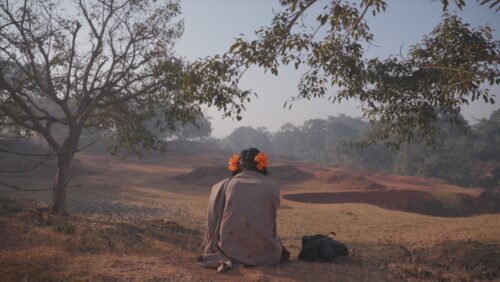
Download
Loading...
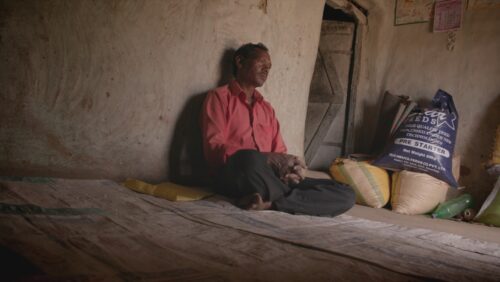
Download
Loading...
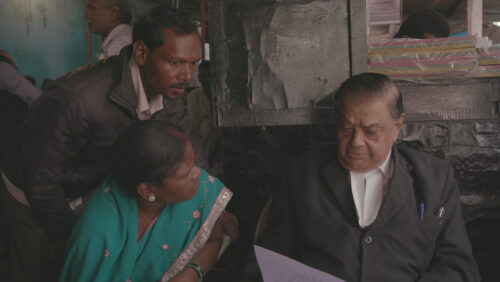
Download
Loading...
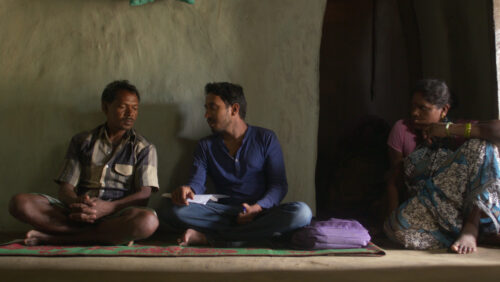
Download
Loading...
 Photo: Dhawalika Singh
Photo: Dhawalika Singh
Download
Loading...
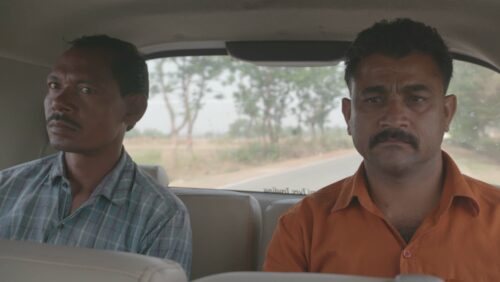
Download
Loading...
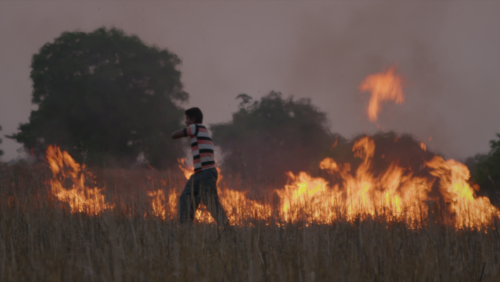
Download
Loading...

Download
Loading...

Download
Contact NFB publicist for high-resolution images for print.
Team
Nisha Pahuja
Producer, Writer, Director
Photo
Photo : Mrinal Desai
Cornelia Principe
Producer (Notice Pictures Inc.)
Photo
David Oppenheim
Producer (NFB)
Photo
Andy Cohen
Executive Producer
Photo
Anita Lee
Executive Producer
Photo
Atul Gawande
Executive Producer
Photo
Andrew Dragoumis
Executive Producer
Photo
Dev Patel
Executive Producer
Photo
Mindy Kaling
Executive Producer
Photo
Shivani Rawat
Executive Producer
Photo
Rupi Kaur
Executive Producer
Photo
Priyanka Chopra Jonas
Executive Producer
Photo
Credits
Written and Directed by
NISHA PAHUJA
Producer
CORNELIA PRINCIPE
Producers
NISHA PAHUJA
DAVID OPPENHEIM
Executive Producer
ANDY COHEN
Executive Producer
ANITA LEE
Executive Producer
ATUL GAWANDE
Executive Producer
ANDREW DRAGOUMIS
Executive Producer
DEV PATEL
Executive Producer
MINDY KALING
Executive Producer
SHIVANI RAWAT
Executive Producer
RUPI KAUR
Executive Producers
ANITA BHATIA
NIRAJ BHATIA
DEEPA MEHTA
SAMARTH SAHNI
PRIYA DORASWAMY
Editors
MIKE MUNN CCE
DAVE KAZALA CCE
Director of Photography
MRINAL DESAI
Original Score
JONATHAN GOLDSMITH
Location Sound Recordist
ANITA KUSHWAHA
Research
NISHA PAHUJA
Archival Research
ERIN CHISHOLM
Creative Consultant
ANDY COHEN
Story Editor
MANFRED BECKER
Consulting Producer
SEAN FARNEL
Executive Producers
JASON LOFTUS
ENA CHADHA
SHANT JOSHI
SEAN FARNEL
GEETA SONDHI
NISHA PAHUJA
CORNELIA PRINCIPE
MARIAM ZAIDI
Post-Production Coordinator
PRANAY NICHANI
Assistant Editors
PRANAY NICHANI
JORDAN KAWAI
Translation & Subtitles
RAJANI RATNAPARKHI
DAVE KAZALA
Media Managers & Assistant Editors
JORDAN KAWAI
NISHA PAHUJA
BLAKE MACFARLANE
MITCHELL ALLEN
MARIA KOMECH
Additional Editing
ROB RUZIC
Additional Camera
SHANTI BHUSHAN ROY
ISLAHUDDIN ASHRAF
SAUMYANANDA SAHI
RAKESH HARIDAS
SYED HUSAIN AKBAR
APAL SINGH
DURAID MUNAJIM
SRIKANTH KABOTHU
Additional Sound
OV SATHIYASEELAN
S KASTHURI
MOHANDAS VP
TAMILARASI NARASHIMAN
DHIMAN KARMAKAR
News Reporters
BHARTI DANG
GAURI RANI
AMIT ARORA
For the National Film Board of Canada
Studio Operations Manager
MARK WILSON
Production Supervisor
MARCUS MATYAS
Senior Production Coordinators
JESSICA JENNINGS
ANDREW MARTIN-SMITH
Production Coordinator
JENNIFER BERTLING
Technical Coordinator
KEVIN RILEY
Technical Assistant
Q’MAL LABAD-WORKMAN
Studio Administrators
PATRICIA BOURGEOIS
STEFANIE BRANTNER
LESLIE ANNE POYNTZ
Studio Coordinator
CARLY KASTNER
Marketing Managers
JESSICA GEDGE
ANDREA ELALOUF
Publicist
JENNIFER MAIR
Legal Counsel
PETER KALLIANIOTIS
Camera & Sound Equipment Rental (India)
ASHU SOLANKI
ACCORD EQUIPMENT
AAKAAR VISION
MOVING MEDIA
FILMING INDIA
DANTKATHAA MEDIA
Production Drivers
AFZAL HUSSAIN
ADITYA KUMAR
SHASHIKANT TIWARI
SANJAY LAMBA
Production Assistants
RAJANI RATNAPARKHI
MARIAM ZAIDI
NISHTHA SADWELKAR
DHAWALIKA SINGH
OMKAR DIVEKAR
CATHERINE ANNE MILLS
HAAD BAKSHI
PATRICE ROC
Additional Translation & Subtitles
MARIAM ZAIDI
LUMMA MAISHA HASAN
MEERA SHARMA
MEGHA SAXENA
OMKAR DIVEKAR
MANGESH NAIDU
ARMAAN JAWLI
SHIVA THORAT
AKANKSHA GUPTA
ANIL RATNAPARKHI
SUBUHI JIWANI
NISTHA SADWELKAR
JYOTSNA CHAUDHARY
Transcripts
LAUREL TOEWS
Legal
DANNY WEBBER
BARUCHA AND PARTNERS
SANKET GAIKWADE
Production Accountant
JONATHAN WONG
Production Bookkeeper
SAM SIMPSON
Production Insurance
FRONT ROW INSURANCE
PR
SHELTER PR
Sound Design and Mix
GRANT EDMONDS
DANIEL PELLERIN
Additional Re-Recording Mixer
LOU SOLAKOFSKI
Assistant Mixer
ELLA MELANSON
Facility
FORMOSA GROUP TORONTO
Dialogue Editors
PATIENCE BRADFORD
ELMA BELLO
Sound Effects Editor
ED DOUGLAS
DANIEL SAMAAN
Sound Effects Consultant
GINELLE ALVARO
Foley Artist
LESLIE ROTHWELL
DV Script
SARAH SAUNDERS
Musicians
Percussion: ED HANLEY, SANTOSH NAIDU, DEBASHISH SINHA
Flutes: ERNIE TOLLAR
Cello: GEORGE KOLLER
Keyboards, Guitars: JONATHAN GOLDSMITH
Vocals: ED HANLEY, RANJIT
Score Recorded & Mixed by
JEFF WOLPERT
at Desert Fish Studios, Toronto
Music Editor
JORDAN KAWAI
Online Editors
KYLE CAMPBELL
RICHARD DOMAN
ANDREW MANDZUIK
Colourist
ANDREW MANDZUIK
Picture Operations
BRUCE REES
Urban Post Manager
LENA HAMADY
ASHLEY POUCHING
Development with the Assistance of
THE NFB/ CFC CREATIVE DOC LAB
Corus – Hot Docs Development Fund
ONTARIO CREATES
Fiscally Sponsored by
WMM PRODUCTION ASSISTANCE PROGRAM
and with the Support of
Inspirit Foundation
Produced with the Assistance of
Hot Docs Ted Rogers Fund
with the Financial Contribution of
AC Films
Produced in Association with
Minor Realm
with the Generous Support of
DEBBIE MCLEOD for
GRANT ME THE WISDOM FOUNDATION
with the Generous Support of
ATUL GAWANDE & KATHLEEN H. HOBSON
ANDREW DRAGOUMIS
MADHU RAJU
MONA SINHA
ENA CHADHA
BEESHAM A. SEECHARAN
with the Generous Support of
MALA GAONKAR
and Generous Donations from
SOOKMEE ALMQUIST
ASIA2US, LLC
SARGON AUDISHO
JANE BROWN
DEVON L. DAVIDSON
LLOYD A. FRY FOUNDATION
LINDA HANESSIAN
CHRISTINE HOFFMAN
DEONE JACKMAN
PRANITA JAIN
JANET KROPIEWNICKI
LOTUS LANE LITERARY
JEAN LOPEZ
ROLAND MASCARENHAS
PEGGY ANNE MATHISEN
MARINA NANDAPURKAR
SUSAN NOEL
RAM RAJU
MOHANBIR SAWHNEY
AVANTI SINGH
JYOTHI SUNKARI
AMERI CHRISTY UCHIDA
RICHARD WAKE/WALKER
YANN WOOLLEY
ANU BAREJA
PAUL DRAGOUMIS
Impact Campaign Producer
GEETA SONDHI
Impact Campaign Strategist and Co-Creator
SOPHY SIVARAMAN
Impact Campaign Coordinator
MARIAM ZAIDI
Outreach and Impact Manager
ZAINAB SULTAN
Associate Producer and Strategic Partnerships Advisor
SHRUTHI REDDY
NITASHA KALRA
Social Media Manager
CARLA ROJAS
Impact Advisor
ANJALI KUMAR
Impact Campaign generously supported by
SHIVHANS PICTURES
THE RAMESH & KALPANA BHATIA FAMILY FOUNDATION
ENA CHADHA
THE NIRAJ BHATIA FOUNDATION
INDIASPORA
PRISM
with the Assistance of
THE CANADIAN FILM OR VIDEO PRODUCTION TAX CREDIT
Ontario Creates
Rogers Telefund
in Association with
TVO
Knowledge Network
with the Participation of
Telefilm Canada
and the Rogers Group of Funds
through the Theatrical Documentary Program
in Co-Production with The National Film Board of Canada
NFB.ca
© 2022 NOTICE PICTURES and the
NATIONAL FILM BOARD OF CANADA


Media Relations
-
About Notice Pictures Inc.
Notice Pictures Inc. is the formal union of the team that made the award-winning projects The World Before Her and Diamond Road.
Filmmakers Nisha Pahuja and Cornelia Principe have worked together on and off for over 15 years and have forged a strong and fruitful working relationship.
www.noticepicturesinc.com
-
About the NFB
For more than 80 years, the National Film Board of Canada (NFB) has produced, distributed and preserved those stories, which now form a vast audiovisual collection—an important part of our cultural heritage that represents all Canadians.
To tell these stories, the NFB works with filmmakers of all ages and backgrounds, from across the country. It harnesses their creativity to produce relevant and groundbreaking content for curious, engaged and diverse audiences. The NFB also collaborates with industry experts to foster innovation in every aspect of storytelling, from formats to distribution models.
Every year, another 50 or so powerful new animated and documentary films are added to the NFB’s extensive collection of more than 14,000 titles, half of which are available to watch for free on nfb.ca.
Through its mandate, its stature and its productions, the NFB contributes to Canada’s cultural identity and is helping to build the Canada of tomorrow.